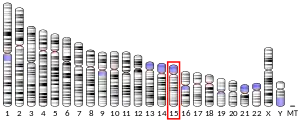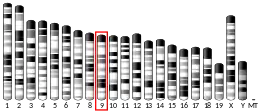| CD276 | |||||||||||||||||||||||||||||||||||||||||||||||||||
|---|---|---|---|---|---|---|---|---|---|---|---|---|---|---|---|---|---|---|---|---|---|---|---|---|---|---|---|---|---|---|---|---|---|---|---|---|---|---|---|---|---|---|---|---|---|---|---|---|---|---|---|
| |||||||||||||||||||||||||||||||||||||||||||||||||||
| Identifiers | |||||||||||||||||||||||||||||||||||||||||||||||||||
| Aliases | CD276, 4Ig-B7-H3, B7-H3, B7H3, B7RP-2, CD276 molecule | ||||||||||||||||||||||||||||||||||||||||||||||||||
| External IDs | OMIM: 605715 MGI: 2183926 HomoloGene: 11892 GeneCards: CD276 | ||||||||||||||||||||||||||||||||||||||||||||||||||
| |||||||||||||||||||||||||||||||||||||||||||||||||||
| |||||||||||||||||||||||||||||||||||||||||||||||||||
| |||||||||||||||||||||||||||||||||||||||||||||||||||
| |||||||||||||||||||||||||||||||||||||||||||||||||||
| |||||||||||||||||||||||||||||||||||||||||||||||||||
| Wikidata | |||||||||||||||||||||||||||||||||||||||||||||||||||
| |||||||||||||||||||||||||||||||||||||||||||||||||||
Cluster of Differentiation 276 (CD276) or B7 Homolog 3 (B7-H3) is a human protein encoded by the CD276 gene.[5]
Structure
B7-H3 is a 316 amino acid-long type I transmembrane protein, existing in two isoforms determined by its extracellular domain. In mice, the extracellular domain consists of a single pair of immunoglobulin variable (IgV)-like and immunoglobulin constant (IgC)-like domains, whereas in humans it consists of one pair (2Ig-B7-H3) or two identical pairs (4Ig-B7-H3) due to exon duplication. B7-H3 mRNA is expressed in most normal tissues. In contrast, B7-H3 protein has a very limited expression on normal tissues because of its post-transcriptional regulation by microRNAs. However, B7-H3 protein is expressed at high frequency on many different cancer types (60% of all cancers). [6] The 4Ig-B7-H3 isoform is predominant in cancer.[7]
Function
In non-malignant tissues, B7-H3 has a predominantly inhibitory role in adaptive immunity, suppressing T cell activation and proliferation.
In malignant tissues, B7-H3 is an immune checkpoint molecule that inhibits tumor antigen-specific immune responses. B7-H3 also possesses non-immunological pro-tumorigenic functions such as promoting migration, invasion, angiogenesis, chemoresistance, epithelial-to-mesenchymal transition, and affecting tumor cell metabolism.[6]
As a possible drug target
Due to its selective expression on solid tumors, B7-H3 has been the target of several anticancer agents such as enoblituzumab (MGA271),[8] omburtamab, MGD009, MGC018, DS-7300a, and CAR T cells.[6][7] Nanobodies targeting the IgV and IgC domains of B7-H3 have been developed in the laboratory of Dr Mitchell Ho at the NCI, NIH (Bethesda, US). The nanobody-based CAR T cells are active in preclinical models of pancreatic cancer and neuroblastoma and show efficacy against large tumors in mice.[7]
See also
References
- 1 2 3 GRCh38: Ensembl release 89: ENSG00000103855 - Ensembl, May 2017
- 1 2 3 GRCm38: Ensembl release 89: ENSMUSG00000035914 - Ensembl, May 2017
- ↑ "Human PubMed Reference:". National Center for Biotechnology Information, U.S. National Library of Medicine.
- ↑ "Mouse PubMed Reference:". National Center for Biotechnology Information, U.S. National Library of Medicine.
- ↑ "Entrez Gene: CD276 CD276 molecule".
- 1 2 3 Kontos F, Michelakos T, Kurokawa T, Sadagopan A, Schwab JH, Ferrone CR, Ferrone S (March 2021). "B7-H3: An Attractive Target for Antibody-based Immunotherapy". Clinical Cancer Research. 27 (5): 1227–1235. doi:10.1158/1078-0432.CCR-20-2584. PMC 7925343. PMID 33051306.
- 1 2 3 Li D, Wang R, Liang T, Ren H, Park C, Tai CH, et al. (September 2023). "Camel nanobody-based B7-H3 CAR-T cells show high efficacy against large solid tumours". Nature Communications. 14 (1): 5920. Bibcode:2023NatCo..14.5920L. doi:10.1038/s41467-023-41631-w. PMC 10517151. PMID 37739951.
- ↑ "Servier Pays MacroGenics $20M for Option to Anticancer Antibody - GEN". GEN. December 2011.
Further reading
- Kontos F, Michelakos T, Kurokawa T, Sadagopan A, Schwab JH, Ferrone CR, Ferrone S (March 2021). "B7-H3: An Attractive Target for Antibody-based Immunotherapy". Clinical Cancer Research. 27 (5): 1227–1235. doi:10.1158/1078-0432.CCR-20-2584. PMC 7925343. PMID 33051306.
- Chapoval AI, Ni J, Lau JS, Wilcox RA, Flies DB, Liu D, et al. (March 2001). "B7-H3: a costimulatory molecule for T cell activation and IFN-gamma production". Nature Immunology. 2 (3): 269–274. doi:10.1038/85339. PMID 11224528. S2CID 43480199.
- Sun M, Richards S, Prasad DV, Mai XM, Rudensky A, Dong C (June 2002). "Characterization of mouse and human B7-H3 genes". Journal of Immunology. 168 (12): 6294–6297. doi:10.4049/jimmunol.168.12.6294. PMID 12055244.
- Ling V, Wu PW, Spaulding V, Kieleczawa J, Luxenberg D, Carreno BM, Collins M (September 2003). "Duplication of primate and rodent B7-H3 immunoglobulin V- and C-like domains: divergent history of functional redundancy and exon loss". Genomics. 82 (3): 365–377. doi:10.1016/S0888-7543(03)00126-5. PMID 12906861.
- Steinberger P, Majdic O, Derdak SV, Pfistershammer K, Kirchberger S, Klauser C, et al. (February 2004). "Molecular characterization of human 4Ig-B7-H3, a member of the B7 family with four Ig-like domains". Journal of Immunology. 172 (4): 2352–2359. doi:10.4049/jimmunol.172.4.2352. PMID 14764704.
- Zhang GB, Chen YJ, Shi Q, Ma HB, Ge Y, Wang Q, et al. (June 2004). "Human recombinant B7-H3 expressed in E. coli enhances T lymphocyte proliferation and IL-10 secretion in vitro". Acta Biochimica et Biophysica Sinica. 36 (6): 430–436. doi:10.1093/abbs/36.6.430. PMID 15188059.
- Castriconi R, Dondero A, Augugliaro R, Cantoni C, Carnemolla B, Sementa AR, et al. (August 2004). "Identification of 4Ig-B7-H3 as a neuroblastoma-associated molecule that exerts a protective role from an NK cell-mediated lysis". Proceedings of the National Academy of Sciences of the United States of America. 101 (34): 12640–12645. Bibcode:2004PNAS..10112640C. doi:10.1073/pnas.0405025101. PMC 515110. PMID 15314238.
- Wang L, Fraser CC, Kikly K, Wells AD, Han R, Coyle AJ, et al. (February 2005). "B7-H3 promotes acute and chronic allograft rejection". European Journal of Immunology. 35 (2): 428–438. doi:10.1002/eji.200425518. PMID 15682454. S2CID 607942.
- Kim J, Myers AC, Chen L, Pardoll DM, Truong-Tran QA, Lane AP, et al. (September 2005). "Constitutive and inducible expression of b7 family of ligands by human airway epithelial cells". American Journal of Respiratory Cell and Molecular Biology. 33 (3): 280–289. doi:10.1165/rcmb.2004-0129OC. PMC 2715317. PMID 15961727.
- Petroff MG, Kharatyan E, Torry DS, Holets L (August 2005). "The immunomodulatory proteins B7-DC, B7-H2, and B7-H3 are differentially expressed across gestation in the human placenta". The American Journal of Pathology. 167 (2): 465–473. doi:10.1016/S0002-9440(10)62990-2. PMC 1603571. PMID 16049332.
- Zhang G, Dong Q, Xu Y, Yu G, Zhang X (August 2005). "B7-H3: another molecule marker for Mo-DCs?". Cellular & Molecular Immunology. 2 (4): 307–311. PMID 16274630.
- Otsuki T, Ota T, Nishikawa T, Hayashi K, Suzuki Y, Yamamoto J, et al. (2007). "Signal sequence and keyword trap in silico for selection of full-length human cDNAs encoding secretion or membrane proteins from oligo-capped cDNA libraries". DNA Research. 12 (2): 117–126. doi:10.1093/dnares/12.2.117. PMID 16303743.
- Sakthivel P, Wang X, Gharizadeh B, Giscombe R, Pirskanen R, Nyren P, Lefvert AK (December 2006). "Single-nucleotide polymorphisms in the B7H3 gene are not associated with human autoimmune myasthenia gravis". Journal of Genetics. 85 (3): 217–220. doi:10.1007/BF02935335. PMID 17406098. S2CID 20818492.
External links
- CD276+protein,+human at the U.S. National Library of Medicine Medical Subject Headings (MeSH)
- Human CD276 genome location and CD276 gene details page in the UCSC Genome Browser.
- Overview of all the structural information available in the PDB for UniProt: Q8VE98 (CD276 antigen) at the PDBe-KB.



